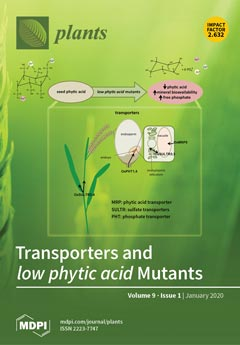Two field experiments were conducted to investigate the effects of three drip irrigation regimes (G
1: 120% crop evapotranspiration (ETc), G
2: 100% ETc, and G
3: 80% ETc) and four nitrogen (N) source treatments (S
0: non-fertilized; S
1: urea, S
2: ammonium nitrate, and S
3: ammonium sulfate on water consumption use, water utilization efficiency, chlorophyll, yield and tubers quality of potato (
Solanum tuberosum L.; cv Diamond) under a drip irrigation system during two successive winter seasons (2015/16 and 2016/17)). Nitrogen fertilization was applied at 380 kg ha
−1 as standard application for potato in the investigated area. The highest tubers yield was obtained from potato grown with G
1 S
2 (65.8 Mg ha
−1), G
1 S
3 (63.6 Mg ha
−1), G
2 S
2 (64.1 Mg ha
−1), and G
2 S
3 (62.4 Mg ha
−1), while the lowest tubers yield was obtained from potato grown with G
3 S
0 (10.1 Mg ha
−1) and G
2S
0 (17.4 Mg ha
−1). Different treatments of N source resulted in a significant increase for water use efficiency (WU
tE) compared with unfertilized treatment. For the interaction effect, the highest WU
tE was obtained from potato grown with G
3 S
2 (18.1 kg m
−3), followed by G
3 S
3 (17.6 kg m
−3), while the lowest WU
tE was obtained from plants grown with G
3S
0 (3.0 kg m
−3). However, the highest chlorophyll content was obtained from plants grown with G1 and any N source, followed by G
2S
1-3, while the lowest chlorophyll content was obtained from those grown with G
3S
0. The highest N, S, protein, and P contents in tubers were obtained from plants grown with G
3S
3, G
3S
2, and G
2S
2, while the highest K content in tubers was obtained from plants grown with G
1S
1 and G
1S
2. In concussion, the integrative effects of G
1 or G
2 with S
2 or S
3 is recommended for high productivity, while the integrative effects of G
3S
3 and G
3S
2 are recommended for high quality tubers.
Full article






